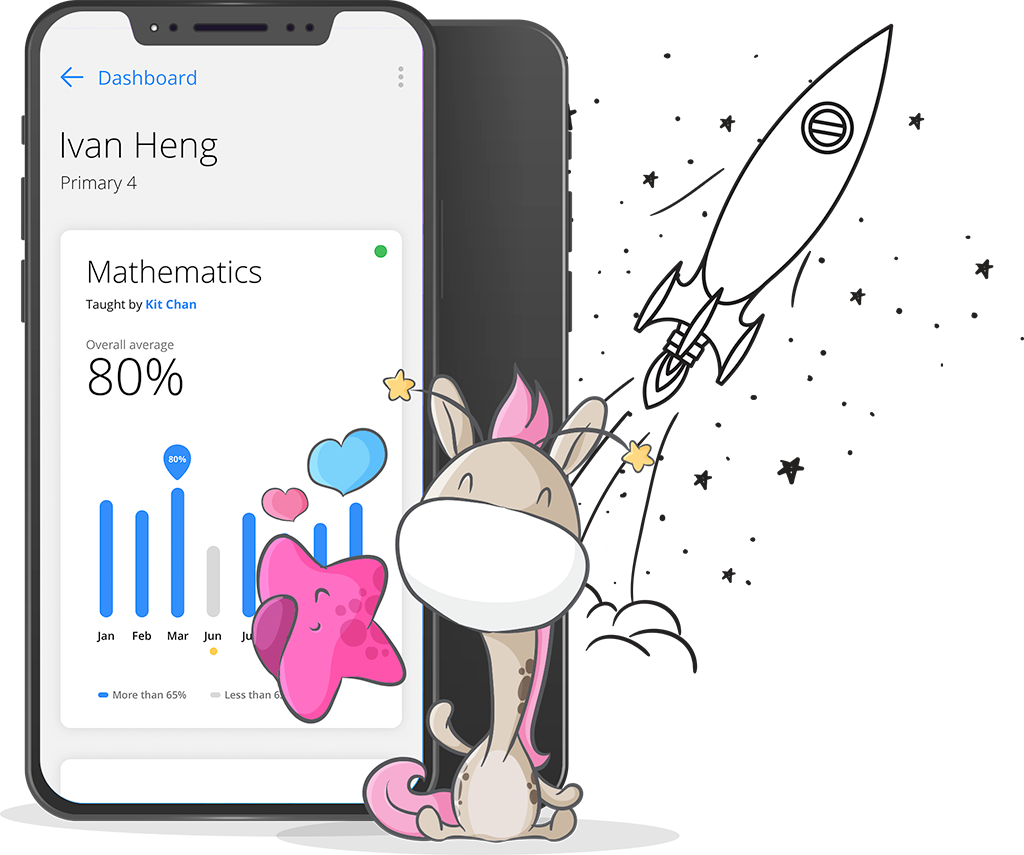The 2019 Primary School Leaving Examination (PSLE) Math paper left some pupils in tears and drew a backlash from parents in Singapore. Many of them pointed out that some questions go beyond the Primary 6 Math curriculum.
But according to a spokesman for the Singapore Examinations and Assessment Board (SEAB), the objective of the paper is to “assess students’ ability to understand and apply concepts”, and the PSLE Math questions are actually based on topics within the syllabus. There is a balance of basic, average and challenging questions to maintain the overall standard of the paper every year to cater to a wide range of students’ abilities.
Some tutors, such as Mr Wallace Wong of the Study Room, opined that there was a shift in recent years from more standard problem sums to more creative questions that need thinking and visualisation.
So how challenging are these past years’ PSLE Math questions? Let’s take a look at 3 particular questions that appeared over the past years.
1. PSLE Math Paper 2019
Question: Jamie and Oliver used $61.20 each to buy some egg tarts. Jamie had a 15% discount coupon and bought 6 more egg tarts than Oliver.
- How many egg tarts did Jamie buy?
- What is the cost of an egg tart without the discount?
Here is one method to get the correct answers.
If 15% discount represents the amount of money that enabled Jamie to buy 6 more egg tarts than Oliver, then 85% represents the amount of money that Jamie and Oliver each used to buy egg tarts. In other words, 85% represents $61.20.
Solution
85% of the cost \(\to $61.20\)
15% of the cost \(\to $61.20 \div 85\% \times 15\% = $10.80\)
This means that the cost of 6 additional egg tarts that Jamie bought is \($10.80\).
Cost of 6 egg tarts \(\to $10.80\)
Cost of 1 egg tart \(\to $10.80 \div 6 = $1.80\)
The cost of 1 egg tart without discount is \($1.80\).
Number of egg tarts Jamie bought
\[= $61.20 \div $1.80 + 6\] \[= 34 + 6 = 40\]Answers
a. Jamie bought 40 egg tarts altogether.
b. The cost of an egg tart without discount is $1.80.
This question is thought to be difficult most probably because some students did not realise that 15% discount is equivalent to the 6 additional egg tarts that Jamie could buy. The solution is not as obvious as they might have thought. The question is also tricky because in the last part, they would still need to include the additional 6 egg tarts to calculate Jamie’s total purchase.
2. PSLE Math Paper 2017
Question: Jess needs 200 pieces of ribbons, each of length 110 cm. However, the ribbons are sold at 25 m per roll. What is the least number of rolls of ribbons that Jess needs to buy?
Solution
We first need to find out how many pieces of ribbons 1 roll can produce.
\(2,500 cm \div 110 cm = 22.7\) pieces of ribbons
That means she can have 22.7 pieces of ribbons, or rather 22 ribbons, per roll (as 0.7 is not a complete ribbon).
Answer
She needs \(200 \div 22 = 9.09\) rolls. Since 9 rolls are not enough, she has to buy at least 10 rolls.
This question could be difficult because the answer is not obvious and needs some creative problem solving. Once the students realise that the unused portion of each roll is to be thrown away, they will understand that they need to add an extra roll at the end to ensure Jenny has enough pieces of ribbons.
2. PSLE Math Paper 2017
Question: One machine took 70 minutes while another took 100 minutes to print the same number of copies of a newsletter. The faster machine printed 6 more copies of the newsletter per minute than the slower one.
- The slower machine completed the job at 1 pm. At what time was the printing started?
- What was the total number of copies printed by the two machines?
Solution
The slower machine: If we turn back the clock by subtracting 100 minutes from 1 pm, we will derive 11.20 am.
Since the slower machine took 100 minutes and completed the printing at 1 pm, it started at \((1 pm – 100 minutes = 11.20 am)\).
The faster machine: With every passing minute, the faster machine printed 6 more copies than the slower one.
At the 70-minute mark, it printed \(70 \times 6 = 420\) more copies than the slower one. In the next 30 minutes, the slower machine needed to print at a rate of \(420 \div 30 = 14\) copies per minute.
If the slower machine printed 14 copies per minute, then it would print a total of \(14 \times 100 = 1,400\) copies in 100 minutes.
The printing rate of the faster machine is \(14 + 6 = 20\) copies per minute.
It printed a total of \(20 \times 70 = 1,400\) copies in 70 minutes.
Hence, the total number of copies printed by the two machines is \(2 \times 1,400 = 2,800\) pages.
Answers
-
The slower machine started at 11.20 am.
-
The two machines printed 2,800 pages altogether.
This rate question was difficult because according to some tuition teachers, Primary 6 pupils do not learn the rate concept until secondary school and this question needs them to adapt the concept of speed to the concept of rate on their own.
Encountering a difficult PSLE exam or tricky PSLE Math questions can cause anxiety and stress to the students, but the parents should be understanding and remind them that this does not represent their self-worth, character or intelligence.
If your child’s PSLE exam is coming, you can download Paperz, where he or she can practise exam questions through smart content powered by AI; it’s free.
We wish you all the best, and happy learning!
Yours sincerely,
Paperz – Your personal exam-buddy!
www.paperz.io
Download the Paperz app now; it's free. Practise exams, solve homework or worksheets and track progress on-the-go!

 Paperz Team
Paperz Team Dale Harris
Dale Harris
